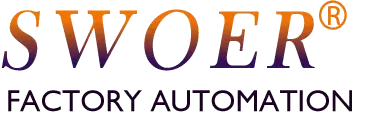Optical inspection is suitable for virtually any manufactured product requiring checks for appearance, dimensions, completeness, or identification. Precision Electronic Components Examples: Printed Circuit Boards, chips, connectors, capacitors, resistors, LEDs. Inspects: PCB solder joints, missing/misplaced components, part dimensions, surface defects. Semiconductors & Wafers Examples: Silicon wafers, packaged chips. Inspects: Wafer contamination, scratches, defect patterns; package appearance, […]
Arquivos do autor: 张
The working principle can be summarized in four core steps: Image Acquisition Process: The system captures an image of the object using an industrial camera and specialized lighting. Key Elements: Lighting: Provides stable, uniform illumination to highlight features of interest and suppress noise. Camera: Converts light into a digital image signal. Image Processing Process: The raw image is sent […]
Classified by Actuation Method Single-Acting Cylinders Principle: Air pressure drives in one direction (extend), and a spring (or external force) returns it. Characteristics: Simple, low air consumption. Uneven force, limited stroke. Double-Acting Cylinders Principle: Air pressure drives both extension and retraction. Characteristics: High, controllable force. Standard, most common type. Classified by Function & Special Structure Rodless Cylinders […]
Adjusting a pusher feeder focuses on optimizing mechanical stroke, timing, and sensor feedback. Mechanical Adjustment Inspection & Cleaning Safety: Disconnect air and power. Action: Clean and check for wear on the pusher, guides, and hopper. Adjust Pusher Stroke Goal: Ensure the pusher fully ejects the part without over-travel. Method: For Pneumatic Cylinders: Adjust sensor positions or flow control valves. […]
Compression Riveter (for Solid Rivets) Process: Insert a solid rivet into a pre-drilled hole. The factory head is supported by a bucking bar or die below. A riveting head applies high pressure to upset the protruding shank. The shank plastically deforms, filling the hole and forming a second shop head. […]
Classified by Measured Property Position/Displacement Sensors: Detect presence, position, or distance. Force/Pressure Sensors: Measure force, weight, or torque. Vision Sensors: Capture images for identification, inspection, etc. Temperature Sensors: Measure temperature. Flow Sensors: Measure gas/liquid flow rate. Level Sensors: Detect liquid level in a tank. Classified by Working Principle Photoelectric Sensors: Use light (blocked or reflected […]
Limited Workspace Description: Its working envelope is relatively small and dome-shaped due to the parallel-arm structure. Pain Point: Unsuitable for long-distance movement; ideal only for compact work areas. Very Low Payload Capacity Description: Designed for speed, with lightweight components limiting load capacity. Pain Point: Typically handles only a few grams to a few hundred grams. Restricted […]
The speed of a centrifugal feeder is one of its standout features. It typically achieves higher and smoother feeding rates compared to vibratory bowls for suitable parts. Speed Range and Advantages High-Speed Range: For small, uniform parts, centrifugal feeders can easily achieve speeds ranging from hundreds to thousands of parts per minute. Speeds between 1000 to 4000 PPM are common. […]
Extremely High Speed Description: The lightweight moving platform is driven by multiple servo motors simultaneously, allowing for very high acceleration and deceleration. Advantage: Ideal for high-speed picking, packaging, and sorting, significantly outperforming traditional serial robots in cycle time. Outstanding Repeatability Description: The load is shared by multiple arms, creating a stable, rigid structure that minimizes cumulative […]
The core principle is that multiple independent arms work in parallel to drive a single moving platform. Core Structure Base Platform: The fixed base. Moving Platform: The end-effector that carries the tooling. Drive Arms: Typically 3 or 4 arms, each driven by an independent servo motor on the base. Forearm Links: Lightweight rods connecting the drive […]
